Steve Sherrell has worked as an artist and educator for over 40 years. As he begins his final semester as a full-time Professor of Art at Joliet Junior College, we have the opportunity to look at this consummate practitioner and reflect upon his influence on generations of Joliet area aspiring artists. The COMP Magazine recently caught up with Sherrell to discuss his family history, current Digital Mash-up investigations, the impact digital media has had on traditional painting, and what his future holds.
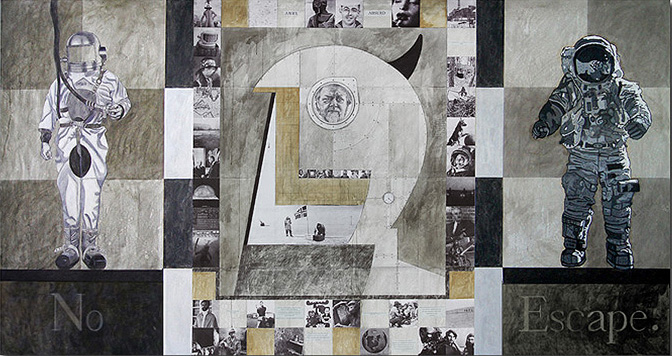
Steve Sherrell, Existential Crisis, mixed-media on canvas, 7 x 14 feet, 2013
Lets start with a little background. You were raised in Indiana, studied at the School of the Art Institute of Chicago and have been teaching in Joliet for a number of years. Have I missed anything? Can you perhaps share any specific experiences that have informed your extensive artistic practice?
I also studied at Ball State University which was the home town college in Muncie, Indiana, where I was raised. My Father was a painter and a display man and did the windows at a department store the Ball family (Ball Corporation- makers of canning jars) owned. My parents were pretty hands off so I spent my childhood enjoying myself and creating mischief.
My Grandmother was from the deep-south and worked in the Ball factory in Muncie. She had my father at age 14 and moved to Muncie with my Grandfather to work at the Ball factory. My Father’s family, the Sherrell family came to America in 1670 as indentured servants from England and my ancestors opened the Shenandoah trail to N. Carolina from Pennsylvania. After that they went into the Appalachians for 200 years. I have a very strange and convoluted history. Suffice it to say; I come from explorers and trader stock. My art reflected that even before I knew of my heritage. I explore art.
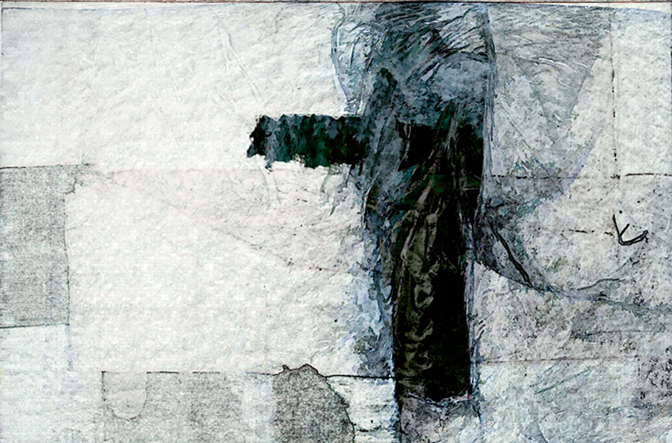
Steve Sherrell, Alberto Burri Mashup, archival digital media, size variable, 2015
On one level, there has been a paradigm shift from traditional painting to the implementation of digital media in your work. What type of impact has this had on your investigations?
Lane Hall, who is the person responsible for the Overpass Light Brigade out of Milwaukee is a friend and began using computers for art in about 1990. In 1991 or 1992, we walked around the Art Institute talking about the future of computing in the arts and he convinced me that I should buy an Amiga computer and learn how to use it. This was early on, the internet was in its infancy, but the Amiga was ahead of it’s time for artmaking. At the same time I began using the computer, so did Andy Warhol, also using an Amiga. Soon I was entering exhibitions in Europe, where Amigas were very popular.
The paradigm shift came about out of two realizations, even that early. One was the realization that Computer Art was going to become a complete entity in its own right. I started believing that if Kandinsky had a computer, he would have been the first computer artist. I still believe that. Secondly, by using the computer to plan my paintings, I could save a great deal of time sitting and trying to visualize my next move. This has been a great a tool for me. I also realized that the hybridization of digital and handmade would have power.
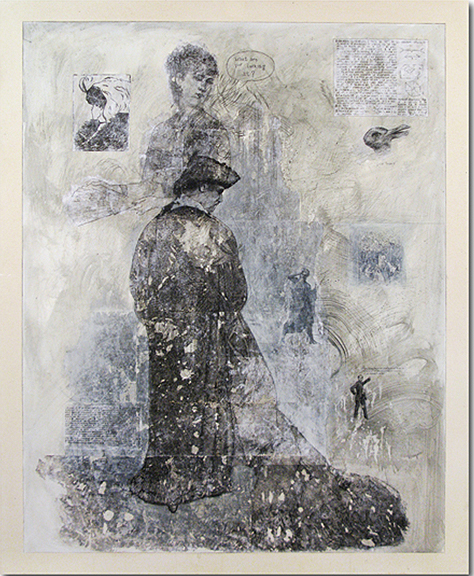
Steve Sherrell, Painting in Revolt, mixed-media on canvas, 50″ x 60″, 2008
In your Mashups, I am seeing a referencing to art history. Specifically, you are revisiting works by modern masters like Rauschenberg, Hockney, Diebenkorn, DeKooning. What was the impetus?
I was showing a student autofill in Photoshop and we began playing with it. I pulled a De Kooning painting off of the internet and began playing with the autofill. It didn’t really work very well, but in the spirit of play, I opened a Rauschenberg painting and pasted it on top. I then resized it, distorting it, and tried to autofill between layers. That didn’t work either; but, and this is a big but; I started playing with the two together using obscure methods to corrupt and disrupt the original images.
I know a lot of ways to corrupt things in various visual programs, so I started altering and erasing and pulling things from here and there and eventually arrived at the first of these pieces. I am familiar with the musical ideas of mashup and remix, so I called it a mashup. The first one was called “Erased De Kooning- Rauschenberg Mashup” It was small so the next thing I did was to explode it into a super high resolution, a 50” X 60” inch file (300 dpi). My student laughed and called it a Koonburger.
I later realized the power of this action. By pulling very low resolution images off of the internet (5” X 7” at 72DPI), I could, in a way, revive the spirit if the original and magically transform it into something new and mysterious. This became a great point of exploration and discovery for me. I felt like I was playing art with my heroes; that I was taking their spirit and transforming their pieces, which had been degenerated into digital detritus, into new and wonderful things.
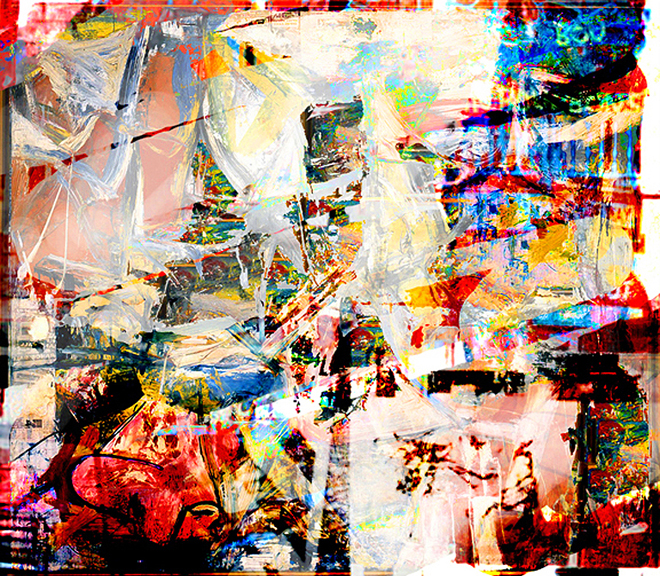
Steve Sherrell, Erased DeKooning Rauschenberg Mashup, archival digital media, size variable, 2015
What do you hope to share with your students? Do you have any approaches that you have used over your tenure in a consistent manner?
My goal as a teacher is, and always will be, to open my students up to the artist inside themselves and to help them to see the passage where they can travel and, as Jung said, experience individuation. In most cases I show my student’s rudimentary methods of doing things, get them started, and then give them a space with the freedom to allow their inner artist to take over and run free. I then gently guide them toward a goal which is suited to their own inner dialogue.
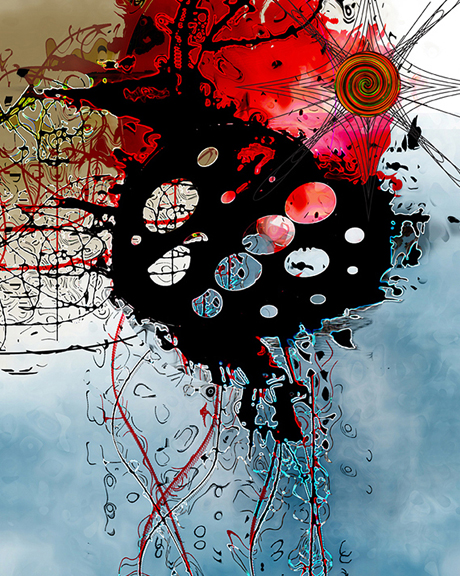
Steve Sherrell, Song of the Pinwheel Galaxy, archival digital media, size variable, 2015
What relevant contemporary art dialogues are you currently looking at?
I have been a producing artist for almost 50 years. If you look at the word ‘current’, there is something telling. I live on a river and there is always current and always a river. The river changes on a more seasonal or weather related basis, so I would say that I am more interested in the idea of long term movement than the ideas that are passing me by at the moment. For example, it is the turn of the century. Like the turn of the last century, which produced modernism, we are approaching the ebb of the beginning of the new century. Look around you. Do things not seem different in almost unnamable ways? Those are the dialogues that interest me. How does the past relate to our present situation? How is art going to present itself in the next 25 years? Is this or that really dead or is it just hibernating? Those kind of questions. The geopolitical realities of the world move culture. Art is both moved by and moves culture. What is the effect of that process on the big picture?
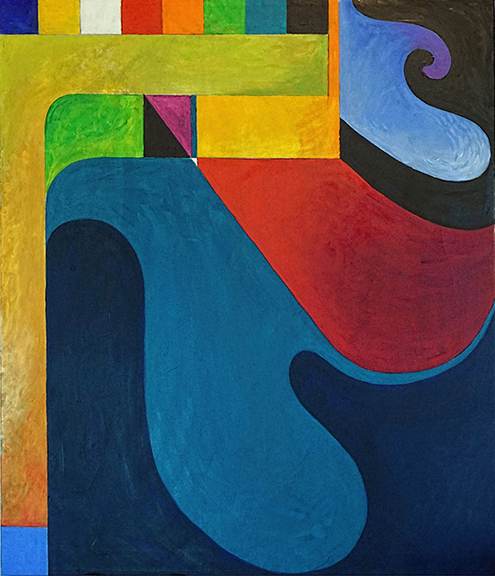
Steve Sherrell, Straight into the Curve, oil on canvas, 30″ x 36″, 2015
Do you have any goals or projects currently under development? Any upcoming exhibitions?
I am retiring from teaching this December. I should say ’from full time teaching at the college’. Currently I am scheduled to have a retrospective exhibit at Joliet Junior College in September. I finish my tenure in December.
I have been showing with 33 contemporary Gallery for 10 years. Before that I was with Sonia Zacs’ Gallery in Chicago for 10 years. I am currently a free agent, so I see an open door. I have taught long enough to have built up enough retirement income so that for the first time in my life I have free time and enough money not to have to struggle. My new goals are to look for new representation, look for new venues to show and reconnect to the larger Chicago scene. I also am looking into both running a gallery and having workshop type classes on various techniques in painting, drawing and framing art.
Health is important also. I am going to enjoy life more; try not to be hurried and watch the river flow by.
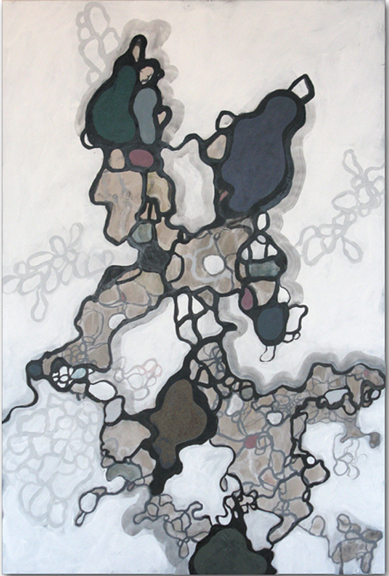
Steve Sherrell, String Theory, acrylic on canvas, 24″ x 36″, 2014
Steve Sherrell is represented by 33 Contemporary Gallery in Chicago and has presented his work at Argonne National Scientific Laboratory, Miami of Ohio University, Art Basel (Miami, FL), Carthage College (Kenosha, WI), Concordia University, 33 Contemporary Gallery (Turin, Italy), the Florence Biennale (Florence, Italy), Museum Lasoberana (Levant, Spain), Ukrainian Institute of Modern Art (Chicago, IL), St. Louis Community College (St. Louis, MO), the Art Institute of Chicago, and numerous other regional, national, and international venues.
For additional information on the work of Steve Sherrell, please visit:
Steve Sherrell – www.stevesherrell.com
Interview by Chester Alamo-Costello


